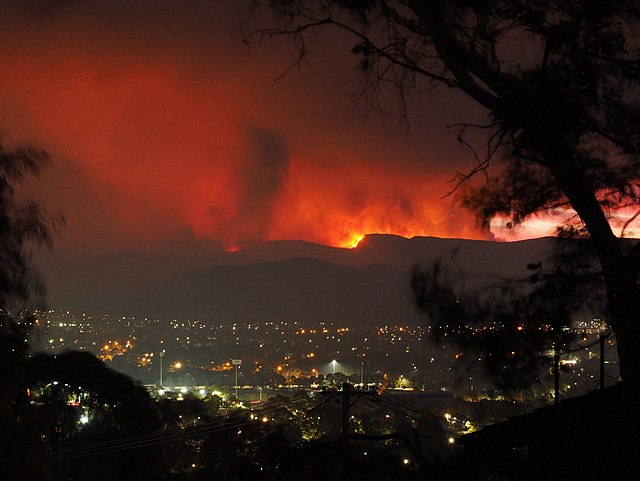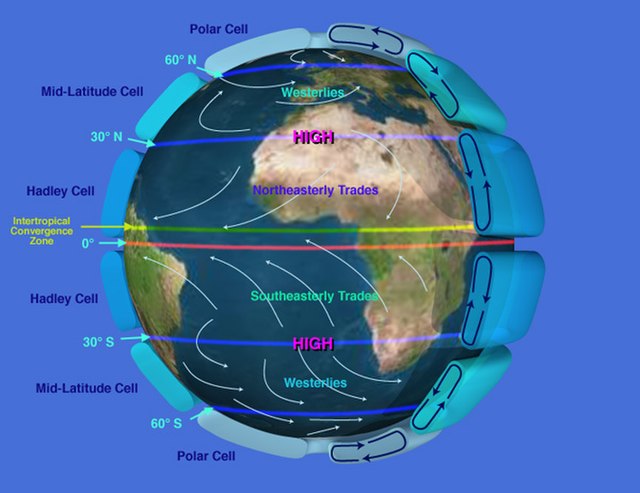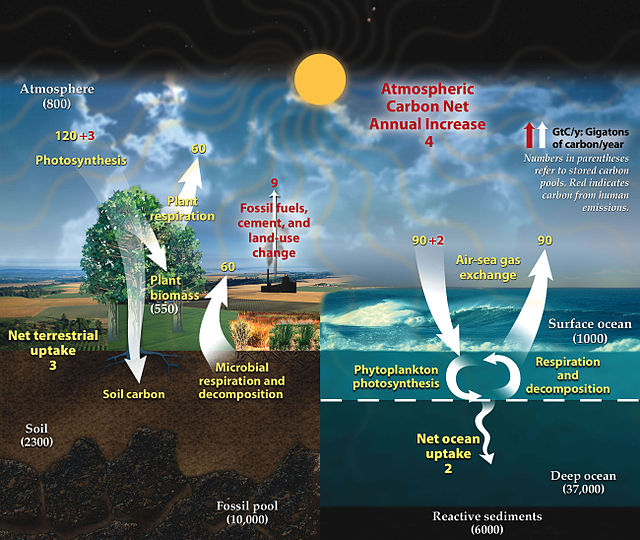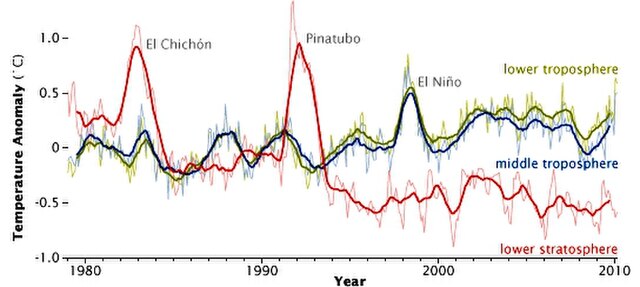In common usage, climate change describes global warming—the ongoing increase in global average temperature—and its effects on Earth's climate system. Climate change in a broader sense also includes previous long-term changes to Earth's climate. The current rise in global average temperature is primarily caused by humans burning fossil fuels. Fossil fuel use, deforestation, and some agricultural and industrial practices add to greenhouse gases, notably carbon dioxide and methane. Greenhouse gases absorb some of the heat that the Earth radiates after it warms from sunlight. Larger amounts of these gases trap more heat in Earth's lower atmosphere, causing global warming.
Sea ice reflects 50% to 70% of incoming sunlight, while the ocean, being darker, reflects only 6%. As an area of sea ice melts and exposes more ocean, more heat is absorbed by the ocean, raising temperatures that melt still more ice. This is a positive feedback process.
Different levels of global warming may cause different parts of Earth's climate system to reach tipping points that cause transitions to different states.
Ecological collapse. Coral bleaching from thermal stress has damaged the Great Barrier Reef and threatens coral reefs worldwide.
Extreme weather. Drought and high temperatures worsened the 2020 bushfires in Australia.
Earth's climate system is a complex system with five interacting components: the atmosphere (air), the hydrosphere (water), the cryosphere, the lithosphere and the biosphere. Climate is the statistical characterization of the climate system. It represents the average weather, typically over a period of 30 years, and is determined by a combination of processes, such as ocean currents and wind patterns. Circulation in the atmosphere and oceans transports heat from the tropical regions to regions that receive less energy from the Sun. Solar radiation is the main driving force for this circulation. The water cycle also moves energy throughout the climate system. In addition, certain chemical elements are constantly moving between the components of the climate system. Two examples for these biochemical cycles are the carbon and nitrogen cycles.
The five components of the climate system all interact. They are the atmosphere, the hydrosphere, the cryosphere, the lithosphere and the biosphere.
Earth's atmospheric circulation is driven by the energy imbalance between the equator and the poles. It is further influenced by the rotation of Earth around its own axis.
Carbon is constantly transported between the different elements of the climate system: fixed by living creatures and transported through the ocean and atmosphere.
In atmospheric temperature from 1979 to 2010, determined by MSU NASA satellites, effects appear from aerosols released by major volcanic eruptions (El Chichón and Pinatubo). El Niño is a separate event, from ocean variability.








